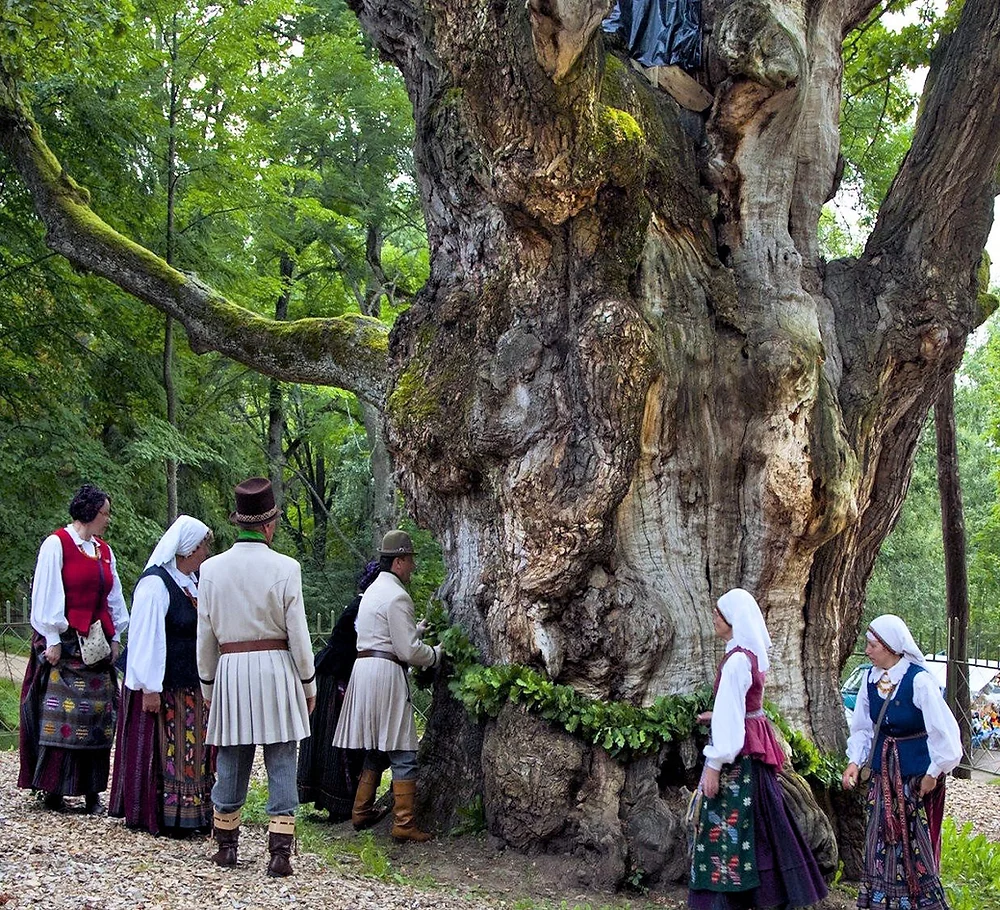
Although many large and old trees grow in Lithuania, the most famous is the Stelmužė Oak in the village of Stelmužė in the Zarasai district. This tree is the oldest oak in Lithuania and one of the oldest in Europe – it is 1.500 years old. Imagine, this oak is even older than Lithuania, if we count the age of Lithuania from its first mention in historical sources in 1009! Stelmužė Oak also stands out from other trees for its impressive size: it is 23 m high and has a diameter of 3,5 m.
In myths that explain the origin of the world, the oak is associated with the mythological world tree standing in the very center of the world. Its roots penetrate the depths, and its branches support the sky. The world tree symbolises the structure and order of the world. The life of the tree – entering a dormant state when the leaves fall each autumn, and awakening in spring – represents the eternal cycle of life. The world tree is often mentioned in Lithuanian folklore, especially in the songs of calendar ceremonies performed during the holidays dedicated to the changes in the cycle of the year such as Christmas, Mardi Gras, Easter and others.
Because the ancient Lithuanians had a very close connection to the world tree, they not only protected the oaks, but also worshiped them as sacred places – the realm gods. In pagan times – a religion that worships the deities of nature – Lithuanians didn’t have temples, but glorified their gods in forests and groves. An equivalent of the world tree – a special tree (large, strangely bent, possessing several trunks or some other unusual features), often an oak – usually stood in the middle of such groves. Those who broke so much as a twig from such a tree would be cursed by gods and humans.
https://mokomesapie.lt/en/100/the-lithuanian-oak-that-is-older-than-lithuania-itself
Comment: I’ve been taking daily walks along the path behind my house this year. The path runs through a small patch of forest that Ive referred to as my cathedral. One of the larger oaks recently caught my eye early on. Actually, it more than caught my eye. It spoke to me or more accurately communed with me. I admired the spread of its canopy even though it was in the middle of a forest. Perhaps this oak began live in a meadow. If only I could hear its story. I could go on about this oak and our recent reveries, but I think I’ll just share a few photos. Enjoy.
TTG
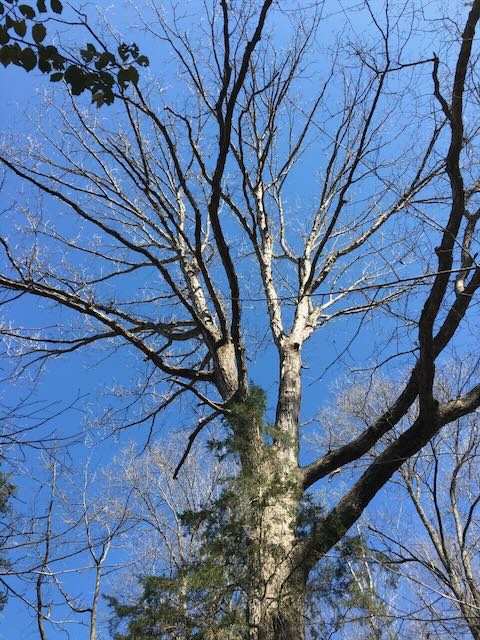
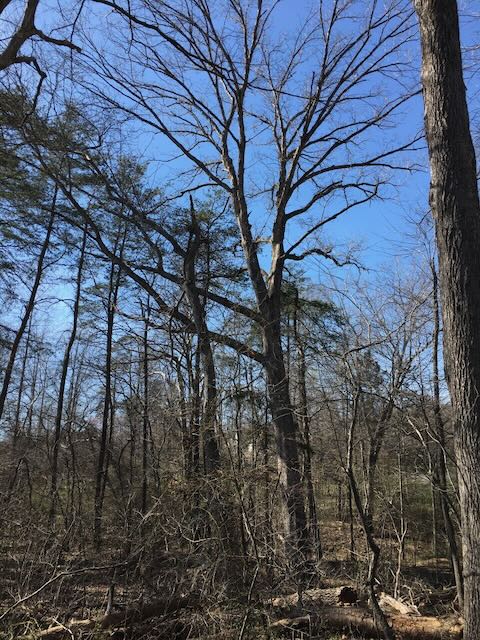
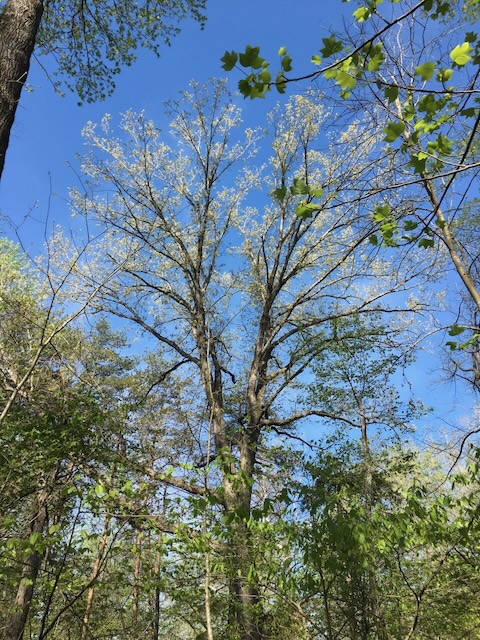
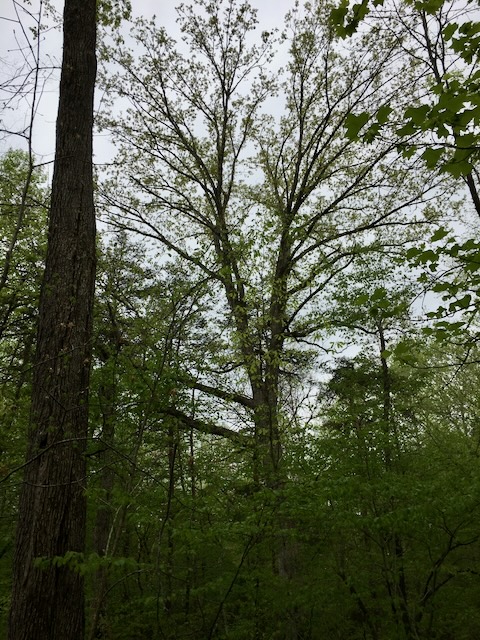
https://turcopolier.typepad.com/sic_semper_tyrannis/2020/04/a-return-to-the-cathedral-ttg.html
https://turcopolier.typepad.com/sic_semper_tyrannis/2019/04/sacred-places-ttg.html
https://fsc.org/en/newscentre/stories/the-guardians-of-sacred-oak-forests

Its Refreshing to See Your “Woods” Again TTG…
I Am Sure The Oak Spoke To You….you Are That Type of Man…Anyone
Researching Oak Trees and What They Represent..Even in The Bible..Will
Know Why You And Your Oak Have Bonded. .A Gift..You Deserve..
The Worlds oldest Living Oak tree is In the United States ..On The Pechanga Indian Reservation…in Temecula, California…Its Call The Pechanga Great Oak..
No Cathederal Can Match The Glory ..or Inspiration..of Nature..Walk Well..TTG
Amazing Tree (Stelmuze Oak) and great story! Thanks, TTG.
I have several old oaks in my back yard – and a zillion more in the patch of woods behind me – but obviously nothing that old. My area (coastal CT) was probably farmland in colonial times, with hillier areas for sheep, cow, etc; like much of New England, there are old stone walls everywhere.
My little forest is about one square mile, a triangle between my road, I-95, and some condos. When the Covid Quarantine came down, I started walking through there regularly. There are some official trails through part of it – marked & maintained by a local Open Space Association (Yay!) – but I’m a scofflaw, one who prefers to go “where no [hu]man has gone before”, so I have blazed a bunch of new trails beyond those. That was my Refuge through times of isolation, and also my favorite kind of exercise. Sadly, my knees are getting so bad that I just can’t do a three-hour hike these days (it’s been bone-on-bone for years, gotta get me a new pair, maybe them new-fangled Titanium ones).
Befriending those woods has been spiritually important for me, too. Since – and even before – my Boy Scout days, I have always felt most at home on trails through forests; perhaps it’s some Germanic genetic memory. Luckly, my Prayer Group/Spiritual Community isn’t dogmatic about Theology, so my semi-neo-Paganism hasn’t gotten me stoned (well, not involuntarily…).
“Not in the dark of buildings confining
Not in some Heaven, light years away
but here in this place, a new light is shining
Now is the kingdom, now is the day”
– “Gather Us In”, Marty Haugen
elkern,
I’m very familiar with Connecticut forests. I grew up in Prospect, Connecticut and went to high school at Fairfield Prep. I and a small group of friends went hiking and camping whenever we could. Connecticut had a tremendous Blue trail system years ago. I don’t know if those trails are still maintained. I miss all the old stone walls that criss crossed the forests. Down here in Virginia, we don’t see them. And as a Connecticut Yankee, I simply cannot bring myself around to buying stones as is the custom at least in this part of Virginia.
Nice. I live at the other end of CT, near the aptly named “Stonington”.
Got out for a nice walk today, looking forward to a big bowl of Ibuprofen for dinner.
I’ve noticed with the oaks here recently that worries me. Useta be, when an old tree went down, the whole tree would go over, pulling up a 10+ foot circle of roots. When I first started hiking in the woods behind my house in 2020, there were several deadfalls like that. But every one that I’ve seen down since then has snapped off, 4-6′ above ground, leaving a jagged stump standing, with both stump & tree obviously hollowed out. (Brought this up because I found a new one today lying across a trail, about 15″ diameter, snapped off just like that). Is there some new alien bug killing our oaks?
I don’t understand. You live in a subdivision? A blight on the Virginia landscape. And without irony you celebrate the wood near your house? I always wondered what subdivision people thought of Virginia. I gather you didn’t like the statues. But you do like the trees, unless they are in the way of a subdivision.
Burke Page,
Yes, it’s a subdivision. And I celebrate the fact that my subdivision preserved some wild spaces. What subdivision people think of Virginia runs the gamut. I’m sure a lot are here because the jobs are here. That’s why I came here in 1988 and again in 1995. I stayed after retirement. My sons stayed here, too. I liked a lot of the Confederate statues, both esthetically and historically. The Appomattox memorial in Alexandria was my favorite war memorial anywhere. I was sorry to see it go, but glad it wasn’t destroyed.
I’ve never lived in a hole in the ground, nor do I expect anyone else living in Virginia to do so. Every Virginian lives in a structure that displaced trees. I don’t begrudge people living in houses.
No oaks out by me here on the WA coast, you have to go inland to see any.
But we’ve got a thousand year old grove of western red cedar. Just a short kayak paddle and hike to see them. Saw one with a 20 foot diameter. Being surrounded by those giants is like being in a cathedral. There are reportedly larger ones there but off the trail. Most of the rest of the island was logged out many decades ago. It is now a national wildlife refuge crawling with elk, bear and porcupine.
And locally there are many huge Sitka spruce, up to 12 foot in diameter. I’ve heard there are larger ones in Alaska & Canada. The local ones are survivors from the Spruce Division in World War One that supplied millions of board feet of spruce for building Army & Navy wood & fabric aircraft. They also supplied it for British, French & Italian planes.
https://www.nwhikers.net/forums/viewtopic.php?p=1165528
https://www.nps.gov/articles/spruceproductiondivision.htm
I grew up in a fifties suburb with a huge Buckeye tree, over a hundred years old, on the property line with our neighbor. The developers saved many of big buckeyes in the area. A couple blocks from us was a huge park that was a valley with a creek on the bottom. As kids we spent the most day down there. Fond memories.
Looks like the makings of a fine log cabin. Maybe someone could get the undocumented an axe and a map. They could make themselves a fine home like my ancestors.
Speaking of woods, off to Georgia (said with a twang) to do some digital detoxing
My daughter family emigrated to the south of Auvergne, in the central west of France,
A region abandoned by the gods.
The population is sparse and the vast forests are unused.
The main trees are chestnut and oak, with plenty of lime and beech. Centuries-old chestnut and lime trees are truly extraordinary in size. The undergrowth is dense. There are fallen trees, dead branches, blackberry bushes, holly and many other prickly shrubs. The layer of dead leaves can reach 5 inches, with granite pebbles hidden in it. The size of the ivy, which covers almost all mature trees, is unusual. A 30-foot deciduous tree is as green in winter as it is in summer, only because of the ivy.
Hiking here is strenuous, perhaps more so than in the Alps. The average elevation is low, 700 feet, but there’s always, always a hill to climb and then descend from 300 to 600 feet. You can, of course, follow the bottom of the gully. It will inevitably lead you to a swamp. It’s almost impossible to stay in the middle of the slope. There’s always an unexpected obstacle, a cliff or a landslide. All that’s left is to climb and descend hard. To give you an idea of the complexity of this multitude of hills, on the 12-mile narrow road to their home, there isn’t a straight, horizontal line for 100 yards.
A tiring walk, to be sure, but what a joy to sit by the stove burning wood from this forest, a hot herbal tea on the table.
Sounds like my kind of place! Perhaps abandoned by some Gods, but a last refuge for others…
We have nothing that venerable round our way. Thin ground and the oaks die off after a hundred years or so. The dead branches stagger twisted across the sky for a few years and then someone fells the trees, or they come down. On lower ground they do better, dramatically so.
A couple of older oaks near a spring. They’re still surviving but the big lower branches die occasionally. Unlike you, TTG, I don’t venture up trees with a chainsaw so lop them off by hand. Hard work. The dead wood is like iron. SWMBO is against having the oaks down so that has to do instead.
Ash can last longer than that Lithuanian oak, sort of, but it’s a bit of a fake. If cut regularly they keep coppicing. I’m coppicing like fury at the moment in the hope that the diseased ash I have will grow on. We have a lot of tree ills carelessly imported from the continent. No doubt they’re equally careless so get some the other way. A moral there, LeaNder?
That brief foray into a critique of the hydra-headed neoliberalism that is wrecking our continent out of the way, the result of constant coppicing is expanding tree circles. The shoots only grow on the outside of the ring. They don’t like growing back into old ground. Some ash circles resulting are said to be 2,000 years old. Said to be, but the calculations aren’t that secure. 500, anyway, for sure. That’s a long time for people to be patiently tending their inheritance and I wonder if we’ll keep that up for the next 500. Hell, this is developing into a political diatribe again so I’ll shut up.
Yes, everything that comes from the continent is a carrier of dangerous viruses (animal and vegetable), of danger in general.
I’m thinking, of course, of the unfortunate boat people who leave Calais and the surrounding area in the hope of a better world, to join a scout or a family. A cruel disappointment for those who survive the crossing. Given the living conditions before, these poor souls must be carrying a mass of bacteria and viruses. Antibiotic-resistant tuberculosis and other horrors are yours for the taking. The NHS will have its work cut out to prevent the spread of these little beasts. More serious than imported oak disease.
Your law deporting illegal immigrants to the heart of Africa, in a country where the head of state is no choirboy, has become enforceable. What will he do with your deportees? A concentration camp, modestly called a family reunification camp? These poor people will only want to escape. He’ll need barbed wire, armed guards, miradors, dogs and all that. Do you pay?
I can honestly say that this is a monstrosity for which the Britts will have much to answer for. To be clear: a Christian monstrosity.
Sorry for this moral diatribe.
D 74 – the failure to take any steps to prevent ash dieback getting into the country, though there were warnings, is told here:-
https://www.theguardian.com/environment/2012/oct/30/ash-tree-crisis-dieback-disease
Similar sloppiness even today:-
https://www.theguardian.com/politics/2024/apr/18/uk-to-delay-start-of-health-and-safety-checks-on-eu-imports-report
“Walrus” recently drew attention to the Post Office scandal here. These examples are but some of the many showing the bubble dwellers are not fit to cope even with the nuts and bolts of running a country properly. I could give you similar examples from the continent and from the States but you get the point.
To move from there to by far the most serious problem confronting all the countries of the West, mass immigration, we see the same sloppy negligence on the largest scale. Or is it just sloppy negligence?
Something deeper, I reckon. Those articles Barbara Ann has just linked to above go some way to showing that the mechanistic utilitarianism that dominates our thinking in the West leads us astray on just about every issue that we confront. We’re in Old Testament territory here, where the turning away from God carries its own dire penalties.
God, or what Crooke terms the immanent, or the transcendent, or just the recognition that there are considerations beyond immediate convenience or the easy fudge – the terms don’t matter in the least. The turning away does.
……………………..
Yes, agree with you, that Rwanda episode is very scrubby. The bubble dwellers are hooked on mass immigration but need some gesture or other for the forthcoming election.
Yeah, humans have been distributing pests/lifeforms around the world ever since we invented boats; usually inadvertently, but often intentionally.
Etienne Leopold Trouvelot brought a bunch of Gypsy Moths from Europe to the USA, hoping to breed them with local moths to make silk here. It didn’t work, and enough of the new moths escaped, of course. With no local predators, they have blossomed into quite an infestation – and the caterpillars love to munch on oak leaves for breakfast, lunch, dinner, desert, and presumably elevensies.
A few years ago here in CT, there was a particularly bad infestation (some sequence of weather which allowed them to propagate fast & far). By June, it was easy to tell which trees along the side of a road were oaks – they were the ones with no leaves.
Wiki says (so it must be true!) that Gypsy Moths defoliate 1 Million acres per year here, which would be about 2% of your Sceptred Isle…
Hmm, have I gotten too “political” about this? I don’t think so, because I haven’t advocated for any specific action, or even said that “we must do something about this”. IMO, that’s the dividing line between “science” (an attempt to understand the Universe we live in) and “politics” (advocating [collective] action).
elkern,
Those gypsy moths were a big problem when I was young in the 60s. You could hear them chewing on the leaves and the webs were terrible when you were hiking. We would use our walking sticks to clear a path on the trail as we walked. We took turns walking point. There were major aerial spraying to control them. Our town did it at least once.
Those hollowed out oaks you noticed may have suffered from some disease or insect infestation as EO described. That’s my guess.
To our brothers in Yemen.some history and how the shoe is on the other foot.Also of what is to come.
https://www.google.com.au/url?sa=t&source=web&rct=j&opi=89978449&url=https://www.sefaria.org/Letter_to_the_Ten_Lost_Tribes_of_Israel&ved=2ahUKEwiAs7Sh0uGFAxUba2wGHd1xD3UQFnoECBkQAQ&usg=AOvVaw3Uq6I0kKxVHHC_zDIq4q8N